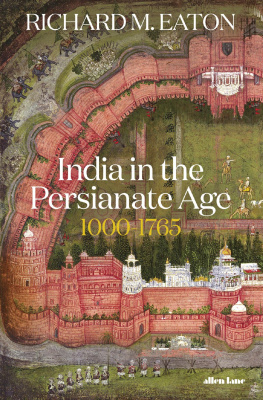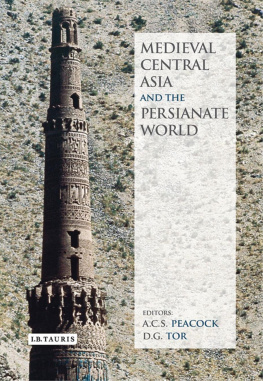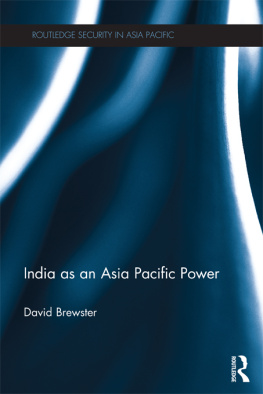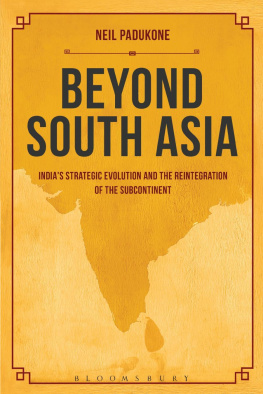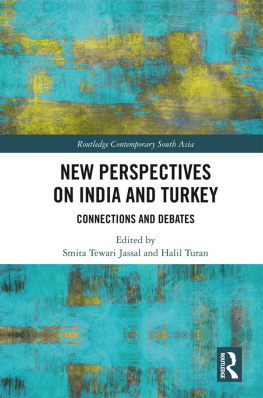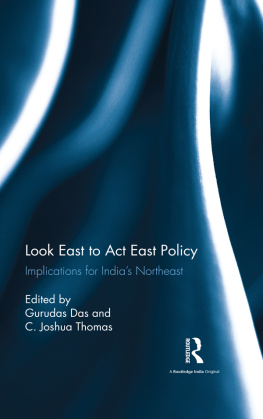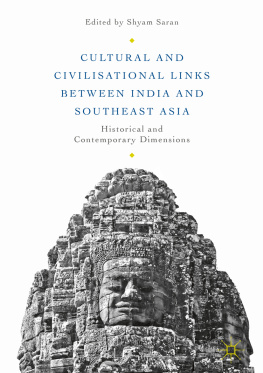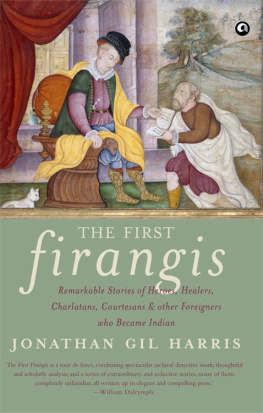Richard M. Eaton
INDIA IN THE PERSIANATE AGE
10001765
Contents
About the Author
Richard M. Eaton has over a long and varied career published a number of ground-breaking books on India before 1800, including major works on the social roles of Sufis, slavery, Indian biography, the growth of Muslim societies along Bengals eastern frontiers, the social history of the Deccan, and the place of Islam in the sub-continents history. India in the Persianate Age draws on a lifetime of teaching and research. He is Professor of History at the University of Arizona.
For family, friends old and new, villagers, farm-hands, musicians, and in memory of fields of golden grain, horses, cows, and dogs (Sadie and Cam), at 100 Lovers Lane, Bainbridge
List of Illustrations
Bronze image of iva as Nataraja, Pala dynasty ( c .7501161). iva temple, ri Amirthakadevara, Mela Kadambur, South Arcot, Chidambaram. Seized from Bengal by Rajendra Chola, c .1022. ( Institut franais dIndologie de Pondichry).
).
Warangal fort: interior of Tughluq audience hall, the so-called Khush Mahal (1323) (author).
Vijayanagara (modern Hampi): northern gateway to the Virupaksha Temple (established twelfth century) ( dbimages/Alamy Stock Photo).
Emperor Timur (d. 1405) enthroned. Pen and wash in Indian ink on Japanese paper, by Rembrandt van Rijn (160669) (Louvre, Paris, France/Bridgeman Images).
Bidar: the madrasa of Mahmud Gawan (completed 1472) (Anne Feldhaus).
Shahr-i Sabz, Uzbekistan: the Aq Saray, palace of Timur (completed 1396) ( dbimages/Alamy Stock Photo).
Yadgir: wrought-iron cannon on a hill in the centre of the fort (late 1550s) (author).
Calicut: Mishkal Mosque (said to date to the fourteenth century, subsequently renovated) ( Hemis/Alamy Stock Photo).
Raichur: Krishna Raya with female attendants, depicted on a frieze in the Naurangi Darwazas inner courtyard (1520) (author).
Detail of Surjan Singh submitting to Akbar, from a painting by Mukund in the Akbar-nama ( c. 1595) ( V&A Museum, London).
Vrindavan: interior of the Govinda Deva Temple (completed 1590) ( Robyn Beeche).
Nur Jahan loading a musket. Painting attributed to Abul-Hasan (1620) ( Raza Library, Rampur, India).
Jahangir taking aim at the head of Malik Ambar. Painted by Abul-Hasan (1616) ( Chester Beatty Library, Dublin).
Amritsar: Harmandir, or Golden Temple (1589) ( Steve Allen/Getty Images).
Jahangir conversing with Jadrup. Painted by Govardhan ( c. 161620) ( The Picture Art Collection/Alamy Stock Photo).
Prince Aurangzeb attacking a raging elephant. Painting in the Padshah-nama (1633) ( Royal Collection Trust).
Lahore: Badshahi Mosque (167173) ( DEA / W. BUSS / Contributor/Getty Images).
Shah Jahan enthroned, with his son Dara Shukoh. Watercolour and gold on paper, by Govardhan ( c. 163040) ( The History Collection/Alamy Stock Photo).
Prince Aurangzeb, probably painted while governor of the Deccan (165357) ( Ashmolean Museum, Oxford).
Kolhapur, Kavala Naka Square: equestrian statue of Tarabai (erected 1981) (author).
List of Maps
The Persianate world, 9001900
Major Indian dynasties, 9751200
Ghurids and Mamluks, 11751290
India in the time of Muhammad bin Tughluq, 132551
Fifteenth-century north India
Peninsular India, 1565
The Mughal empire to the mid seventeenth century
India, 16801707
Acknowledgements
Books of this sort germinate, grow and ripen in mysterious ways. Yet one thing is clear. Over years of teaching, reading, and immersing myself in fieldwork in India, Pakistan and Bangladesh, many colleagues and friends, perhaps unbeknown to them, helped shape my thinking about South Asian history generally, and about this book in particular. Those to whom I am especially indebted include Said Arjomand, Akeel Bilgrami, Jerry Brennig, Carl Ernst, Munis Faruqui, Barry Flood, Stewart Gordon, Najaf Haider, Harbans Mukhia, Laura Parodi, Shelly Pollock, Ajay Rao, Rajat Ray, Ronit Ricci, Francis Robinson, Samira Sheikh, David Shulman, Ramya Sreenivasan, Audrey Truschke, Phil Wagoner, and Andr Wink. I also wish to thank those who offered useful comments at talks I gave at the University of California at Berkeley, Vanderbilt University, Jahangirnagar University, Cambridge Universitys Trinity College, St Andrews University, and Yale University. For sharpening my focus on what this book is really about, I owe special thanks to zlem Ayse zgr. I alone, however, am responsible for any mistakes that might remain.
For his sound advice and steadfast support, I am deeply grateful to Simon Winder and his talented team at Penguin. Linden Lawsons meticulous copyediting proved immensely valuable. In different ways, many others helped me in this project. For their warm hospitality in Hyderabad (Deccan), I thank V. K. Bawa and Frauke Quader; in Bangalore, Amar Kumar; and in Dhaka, Perween Hasan. I thank Gail Bernstein for commenting on early drafts, Lois Kain for her expert work in preparing the maps, and the staffs at the University of Arizona Main Library and the Chillicothe & Ross County Public Library for their able assistance. I am also grateful to my dean, J. P. Jones, for generously granting me sufficient leave time to complete this project.
That might never have happened, however, were it not for the tranquility and the fellowship of my sister Beths lovely farm in the Appalachian foothills. The following chapters were drafted in the walnut-panelled hallway of her rambling, nineteenth-century farmhouse, surrounded by fields of corn and soybeans. It was a delightful place to work inscribed on the brick and stone hearth was an old Scottish adage: East, West, Hames Best. On occasion, I might spot an eagle soaring high in the skies outside, or hear the sound of horses galloping along the pasture fence that lay only a few meters beyond the hallways big front door. I dedicate this book to those treasured days.
Introduction
STEREOTYPES AND CHALLENGES
This book focuses on South Asian history from roughly 1000 to the late eighteenth century, one of the most compelling, consequential and controversial periods in Indias long history. While providing a broad overview of the subcontinent during this period, the book also seeks to challenge lingering stereotypes that have taken hold in recent decades.
One such stereotype is that India had remained a largely stagnant civilization until stimulated by European rule in the eighteenth century. In contrast, the current volume paints a picture of Indias repeated self-transformation during these eight centuries. It was between the eleventh and eighteenth centuries, after all, that India witnessed, among other things, the disappearance of Buddhism, the appearance of the Sikh religion, the growth of the worlds largest Muslim society, the transformation of vast tracts of land from jungle to fields of grain and the integration of tribal clans into the Hindu social order as castes. This era also witnessed Indias emergence as the worlds industrial powerhouse, based on the export of manufactured textiles. The notion that India merely stood still for eight centuries is, to say the least, mistaken.
Another stereotype addressed in this volume is the notion of India as a self-contained and territorially bounded essence, historically isolated from outside. Rather, this book stresses South Asias contacts with the societies and cultures of Central Asia, Africa, East Asia, South-east Asia and, especially, the Middle East. In fact, most of the historical changes mentioned above cannot be understood without situating India in the context of its relations with neighbouring peoples.

